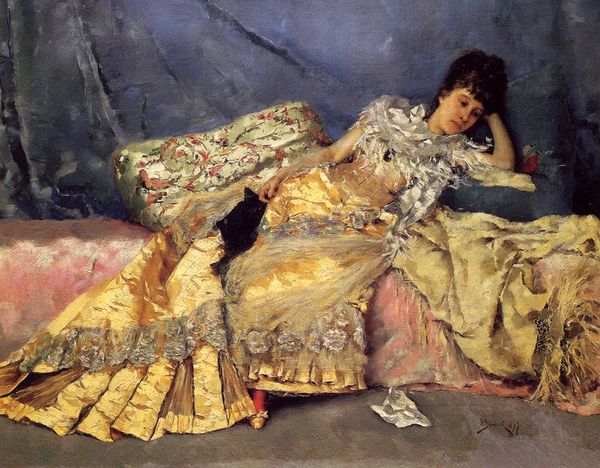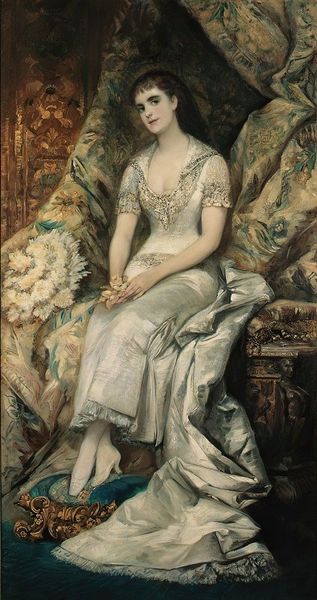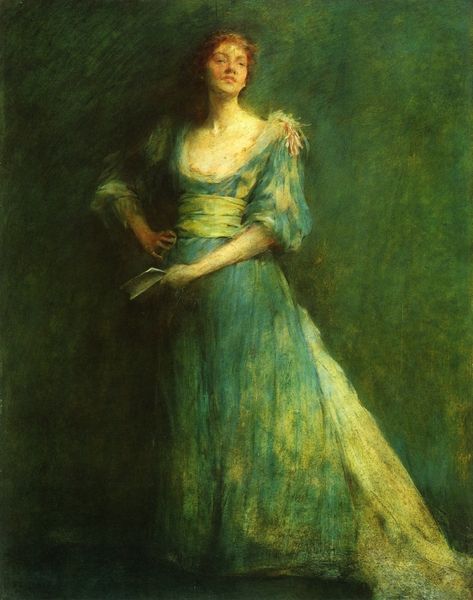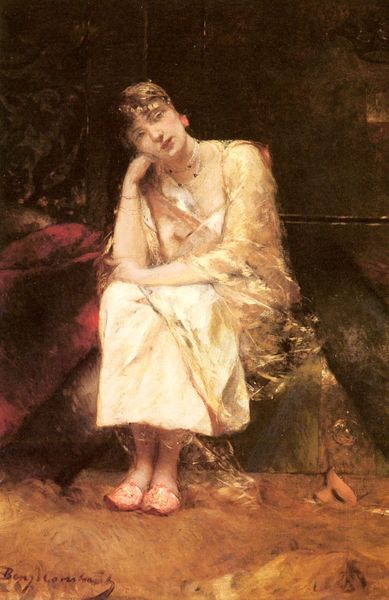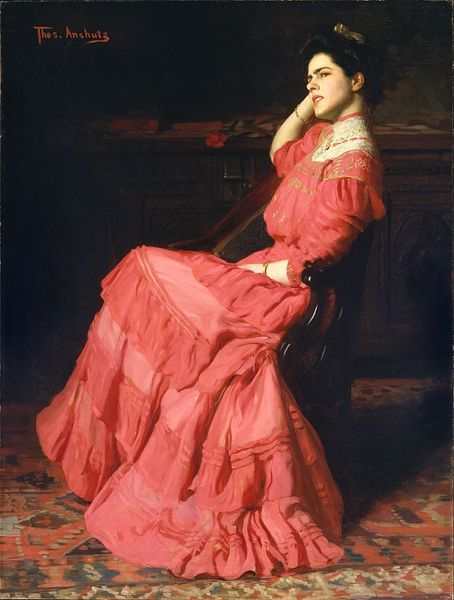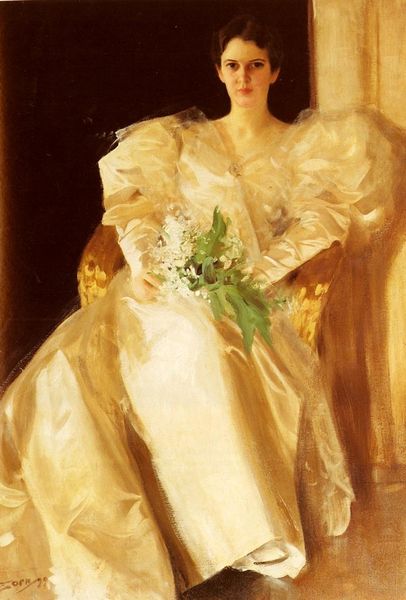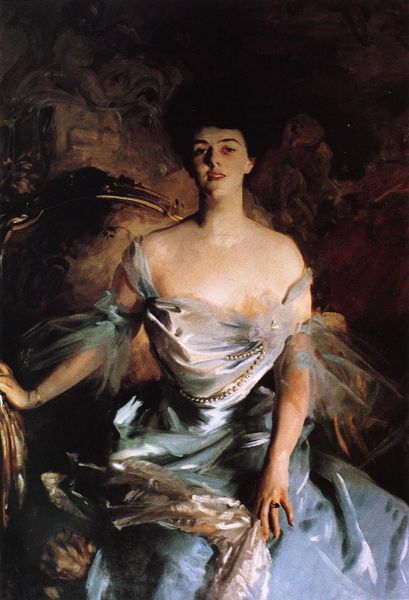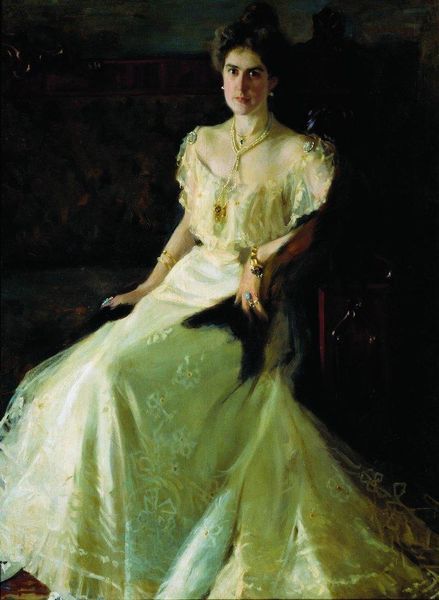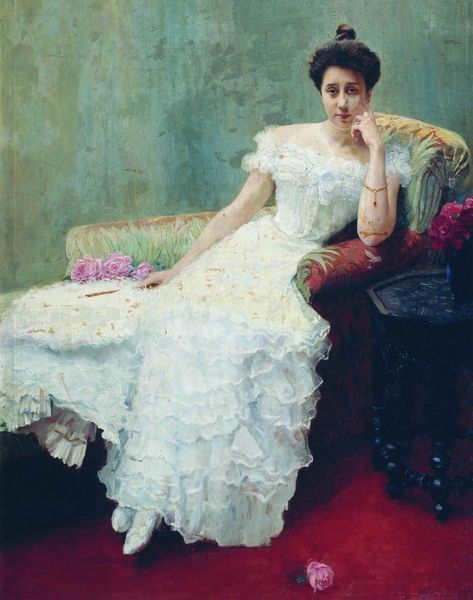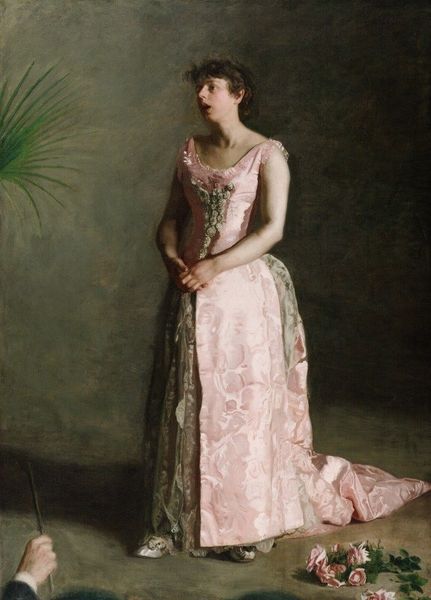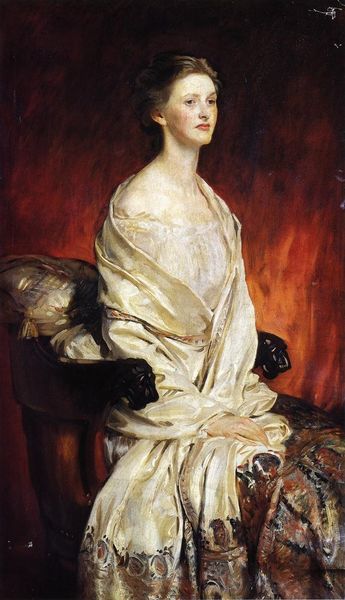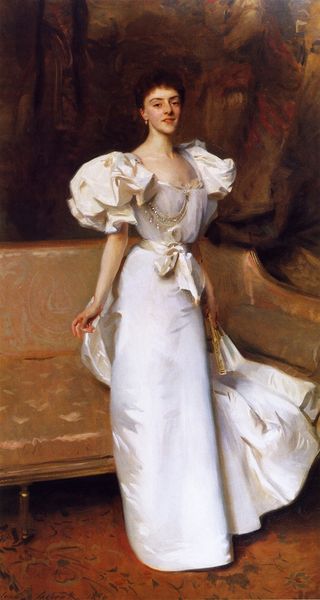
Copyright: Public domain
Editor: Thomas Anshutz’s "Figurepiece," painted in 1909 with oil on canvas, presents a woman reclining in a wicker chair, bathed in soft light. There's a pervasive mood of melancholy... What do you see in this piece? Curator: This painting speaks to the constraints placed upon women in the early 20th century. While seemingly just a portrait, consider the model's posture: slumped, almost defeated, within the confines of her elaborate dress and domestic space. The muted color palette and darkened background intensify that feeling. What might that say about the limited roles available to women of that era? Editor: That’s a really interesting perspective. I initially saw the dress as just beautiful, a product of impressionistic brushstrokes, but your reading adds so much depth. I wonder about the socio-economic context, too – the dress looks expensive. Curator: Precisely! This luxury becomes a kind of gilded cage. Think about the era's rigid class structures and societal expectations. Her wealth and status do not necessarily equate to personal freedom. Her immobility is key here – consider how it reinforces the idea of women being objects of beauty, confined to the domestic sphere. Does the work seem to engage in an intentional dialogue around class and gender? Editor: I hadn't considered how literally confined she appears. It reframes my understanding entirely. So the “Figurepiece” isn't just a nice painting; it’s a subtle critique? Curator: Absolutely. Anshutz prompts us to examine the unseen pressures shaping women’s lives, challenging viewers to look beyond surface beauty. Editor: This makes me rethink portraiture in general! I will start researching more about intersectionality of gender, class, and art. Curator: Wonderful. Art like this invites continuous re-evaluation through new perspectives.
Comments
No comments
Be the first to comment and join the conversation on the ultimate creative platform.
